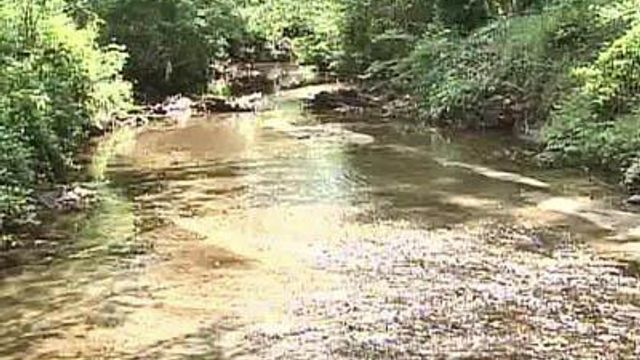PCBs contaminate Walnut, Rocky Branch creeks
Cancer-causing chemicals have been found in two Raleigh waterways, posing a health hazard to people who eat fish caught in them.
Posted — UpdatedTests by state environmental regulators detected polychlorinated biphenyls, or PCBs, in Rocky Branch Creek and Walnut Creek, which flow through south Raleigh and empty into the Neuse River east of the city.
Phil Jeffreys, a former Wake County commissioner, said he urged regulators to test the creeks more than 25 years ago, fearing the sites where he had fished for decades were contaminated.
"Nobody was really interested in it. It did not seem to be important enough at the time," Jeffreys said.
The advisories, the state says on its Web site, "cover the Neuse River from just below Crabtree Creek to Auburn-Knightdale Road, as well as Walnut Creek and Rocky Branch just upstream of the Neuse. Laboratory tests on fish from those waterways show high levels of PCBs."
PCBs were used as coolants and lubricants in electrical equipment until the late 1970s, when the U.S. banned their production. Federal regulators cited evidence that PCBs build up in the environment and can cause health problems from rashes to liver ailments.
Officials also have designated the chemicals as likely carcinogens.
The Triangle has a tainted history with PCBs:
Thirty years ago, Warren County residents protested when PCB-contaminated soil was dumped in a local landfill. Ward Transformer Co. had used PCBs in its transformers, and workers with the Raleigh-based company sprayed PCB-laced oil along hundreds of miles of state roads.
The soil was eventually dug up and dumped in Warren County, where officials said it could be sequestered. Local protests claiming environmental racism eventually prompted the state to spend $18 million to clean the landfill.
More recently, the U.S. Environmental Protection Agency has begun preparations to clean PCB-contaminated soil from a former Ward Transformer plant near Raleigh-Durham International Airport.
PCBs on that site leached into Brier Creek and have been found in Brier Creek Reservoir, Lake Crabtree and Crabtree Creek, prompting earlier warnings about fish consumption from those waterways.
Jeffreys said he remembers that Ward Transformer operated a site south of downtown Raleigh, along Rocky Branch Creek, in the 1940s and 1950s, long before it moved to near RDU.
"History is what it was. That's just it," he said. "This is what it was and what happened."
The Division of Public Health tested sediment samples from Rocky Branch Creek and Walnut Creek two years ago and found PCBs at locations upstream and downstream of the former Ward Transformer site, said Doug Campbell, director of the division's Occupational and Environmental Epidemiology Branch.
"We really can't link the PCBs to any specific cause," Campbell said.
Because PCBs sink into sediment, scientists don't believe contact exposure or drinking the water pose major health risks. The primary concern is eating fish that have ingested the chemicals while feeding.
"It's important for people to know there's a risk out there and to avoid eating enough fish that would put them at risk," Campbell said.
Dean Naujoks, of the the Neuse River Foundation, calls the discovery of PCBs in the two tributaries "just another blow to the river."
"How are we going to repair the health of this great river that provides so many people with drinking water and so many recreational opportunities?" Naujoks asked.
Jeffreys said he's frustrated by the fact that the state didn't test the creeks earlier.
"(The contamination) was much higher then, and we've allowed people to eat fish out of it with no restrictions on it," he said.
Campbell said he didn't know why regulators didn't test Rocky Branch Creek – it was once declared the most polluted urban stream in North Carolina – and Walnut Creek years ago.
The relatively low levels of PCBs that have been found and the limited use of the two creeks mean that a cleanup is unlikely, he said, adding that the Division of Public Health doesn't even have money right now to post fish advisory signs along the banks.
He promised, however, state regulators would continue to monitor the waterways. "(As to) what happens in the future, we need to watch it."
• Credits
Copyright 2024 by Capitol Broadcasting Company. All rights reserved. This material may not be published, broadcast, rewritten or redistributed.





